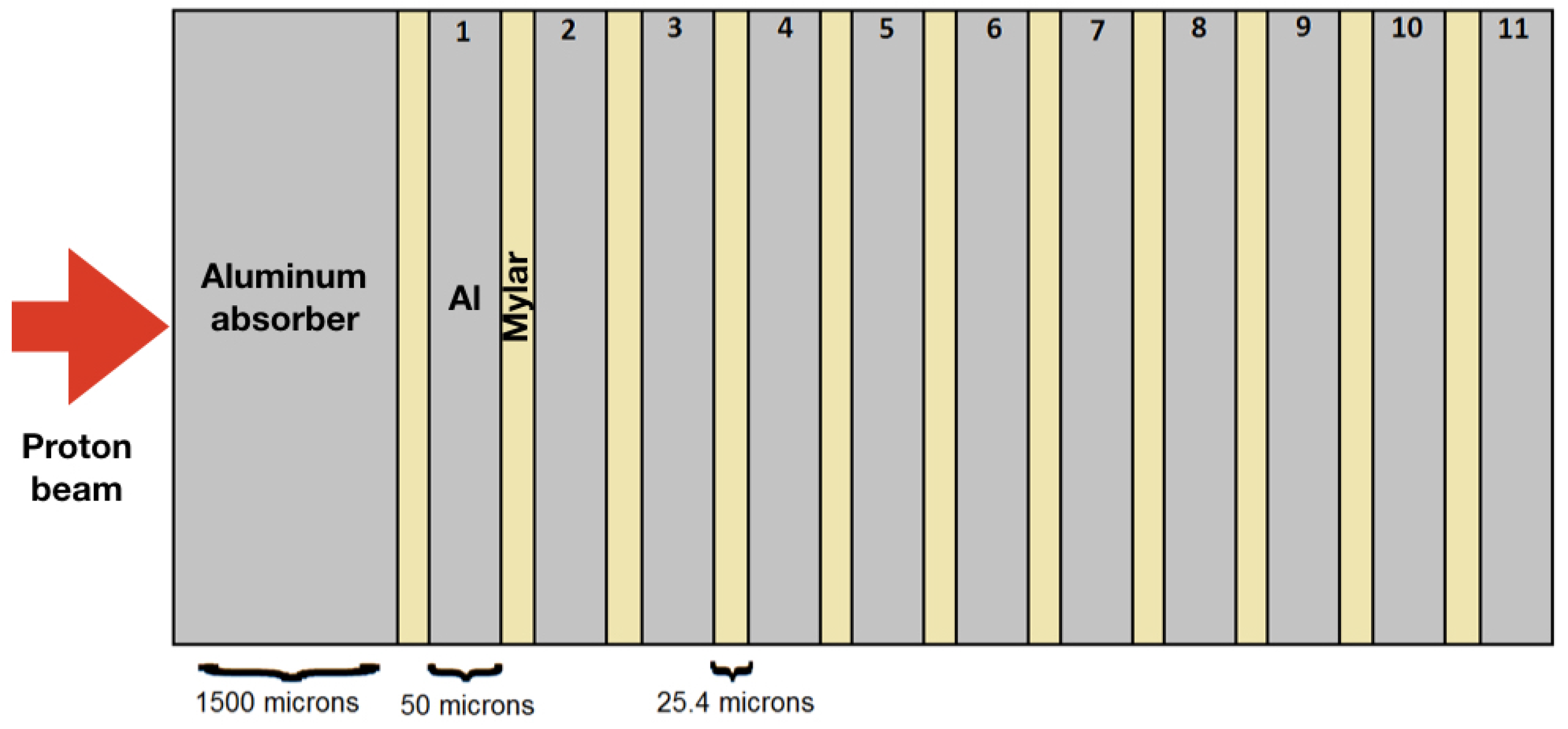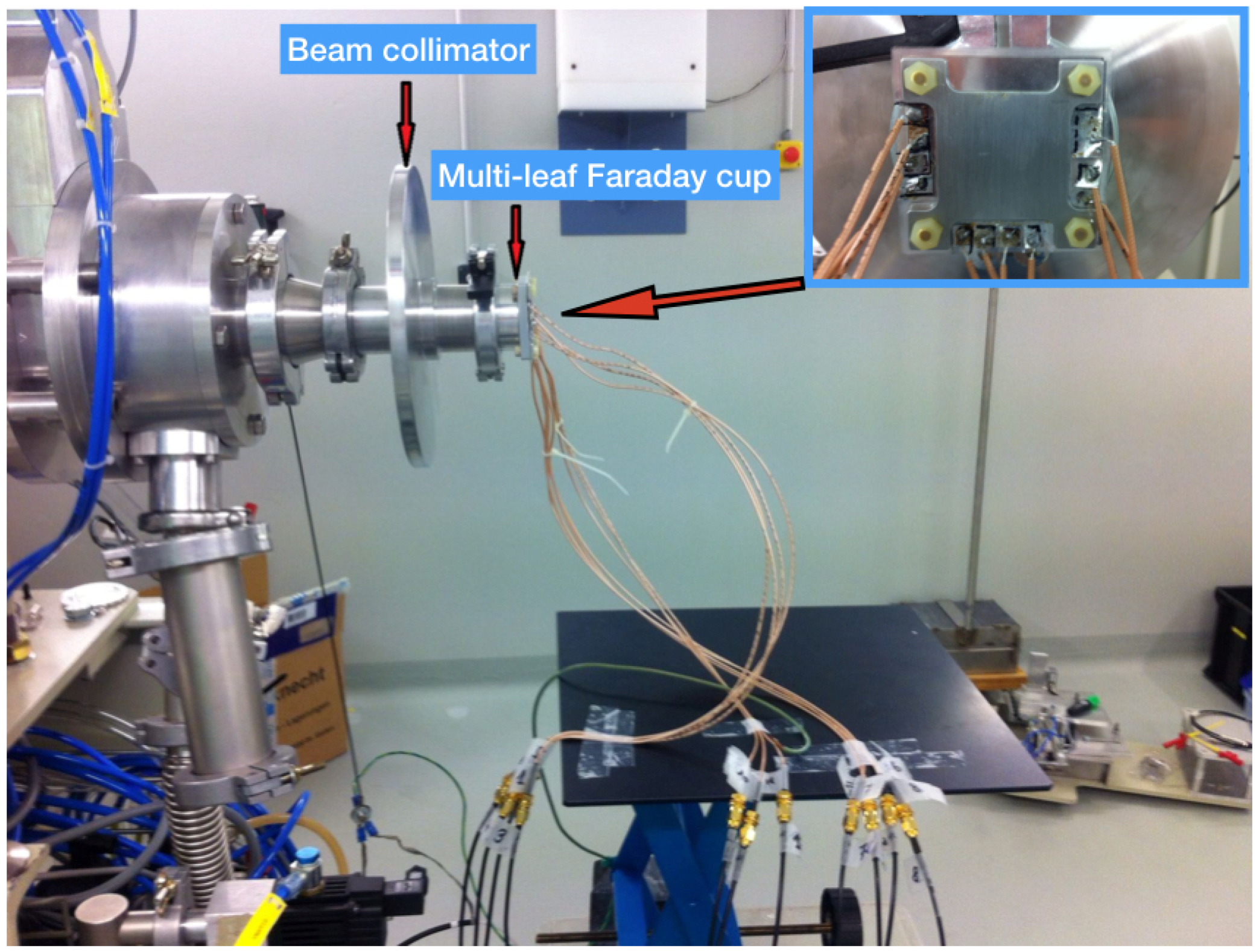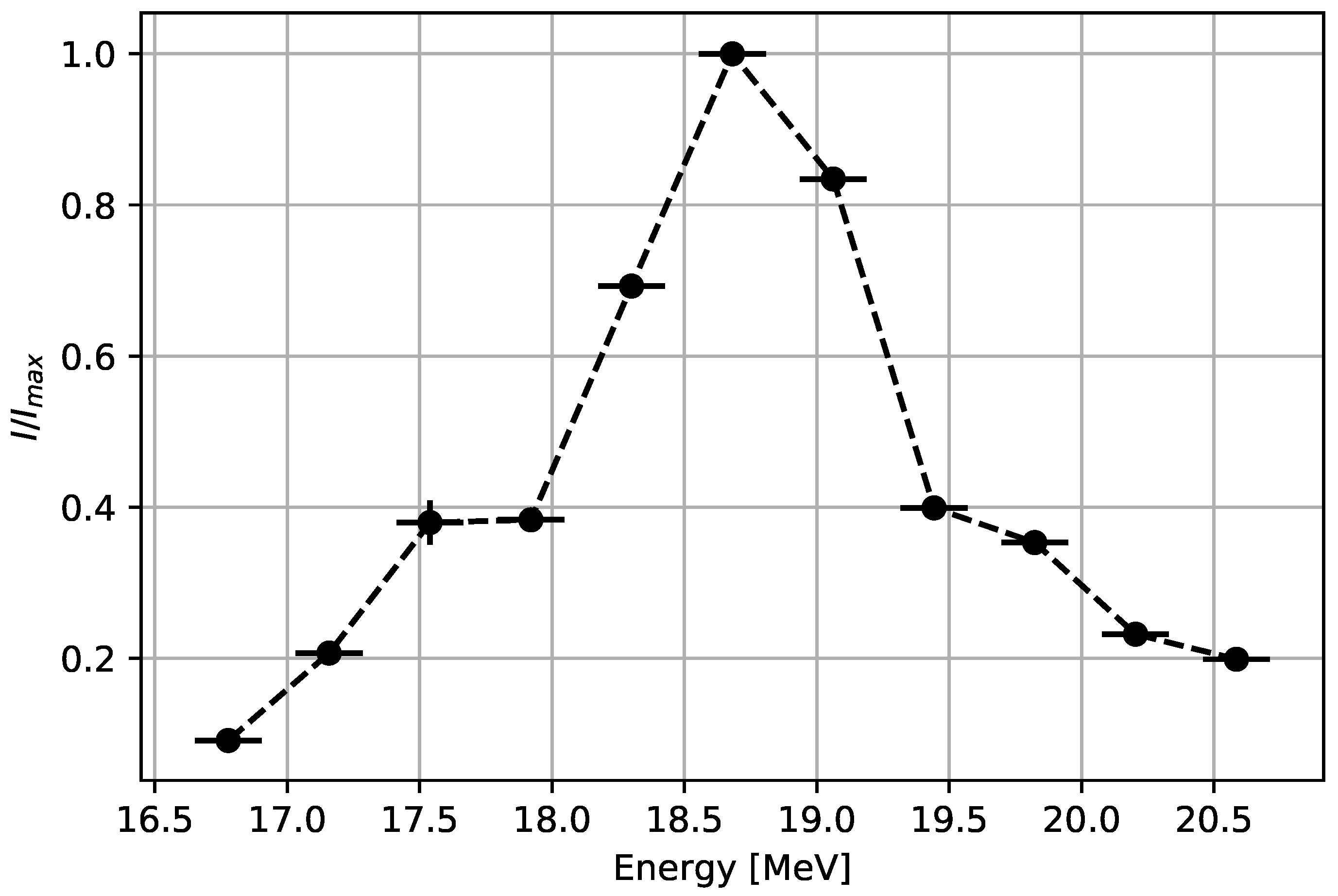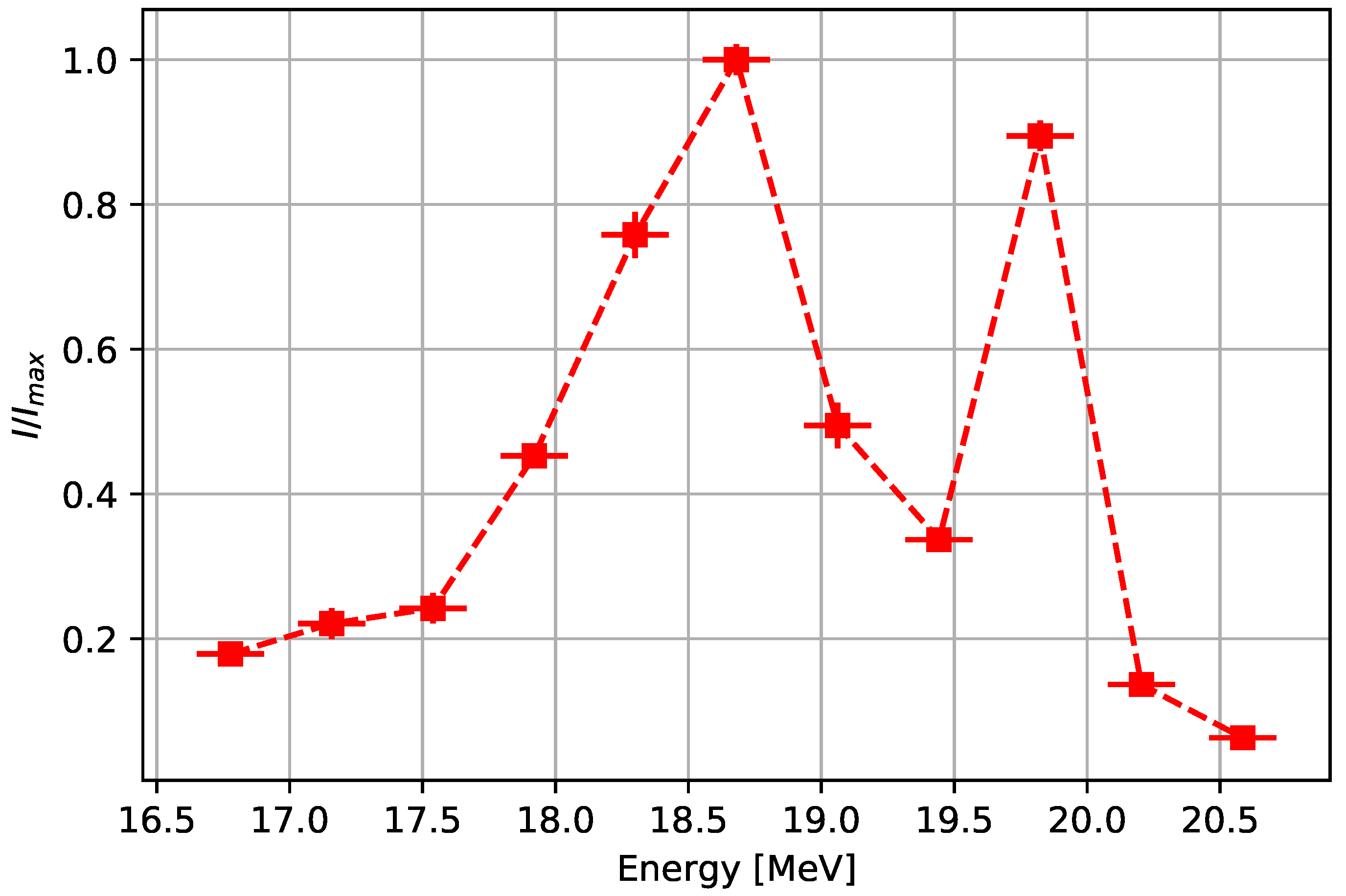Measurement of the Beam Energy Distribution of a Medical Cyclotron with a Multi-Leaf Faraday Cup
Abstract
:1. Introduction
2. Materials and Methods
3. Results
4. Conclusions
Author Contributions
Acknowledgments
Conflicts of Interest
References
- Braccini, S. Compact medical cyclotrons and their use for radioisotope production and multi-disciplinary research. In Proceedings of the Cyclotrons2016 TUD01, Zurich, Switzerland, 11–16 September 2016; p. 229. [Google Scholar]
- Braccini, S. The new Bern PET cyclotron, its research beam line, and the development of an innovative beam monitor detector. AIP Conf. Proc. 2013, 1525, 144. [Google Scholar] [CrossRef]
- Seidel, S.; Bundesmann, J.; Damerow, T.; Denker, A.; Kunert, C.; Weber, A. A multi-leaf Faraday cup especially for proton therapy of ocular tumors. In Proceedings of the Cyclotrons2016, Zurich, Switzerland, 11–16 September 2016; Volume MOE02, pp. 118–120. [Google Scholar]
- Ziegler, J.F.; Ziegler, M.D.; Biersack, J.P. SRIM—The stopping and range of ions in matter. Nucl. Instrum. Methods 2010, 268, 1818–1823. [Google Scholar] [CrossRef]
- Nesteruk, K.P.; Auger, M.; Braccini, S.; Carzaniga, T.S.; Ereditato, A.; Scampoli, P. A system for online beam emittance measurements and proton beam characterization. J. Instrum. 2018, 13, P01011. [Google Scholar] [CrossRef]
- Auger, M.; Braccini, S.; Ereditato, A.; Nesteruk, K.P.; Scampoli, P. Low current performance of the Bern medical cyclotron down to the pA range. Meas. Sci. Technol. 2015, 26, 094006. [Google Scholar] [CrossRef]




© 2019 by the authors. Licensee MDPI, Basel, Switzerland. This article is an open access article distributed under the terms and conditions of the Creative Commons Attribution (CC BY) license (http://creativecommons.org/licenses/by/4.0/).
Share and Cite
Nesteruk, K.P.; Ramseyer, L.; Carzaniga, T.S.; Braccini, S. Measurement of the Beam Energy Distribution of a Medical Cyclotron with a Multi-Leaf Faraday Cup. Instruments 2019, 3, 4. https://doi.org/10.3390/instruments3010004
Nesteruk KP, Ramseyer L, Carzaniga TS, Braccini S. Measurement of the Beam Energy Distribution of a Medical Cyclotron with a Multi-Leaf Faraday Cup. Instruments. 2019; 3(1):4. https://doi.org/10.3390/instruments3010004
Chicago/Turabian StyleNesteruk, Konrad P., Luca Ramseyer, Tommaso S. Carzaniga, and Saverio Braccini. 2019. "Measurement of the Beam Energy Distribution of a Medical Cyclotron with a Multi-Leaf Faraday Cup" Instruments 3, no. 1: 4. https://doi.org/10.3390/instruments3010004
APA StyleNesteruk, K. P., Ramseyer, L., Carzaniga, T. S., & Braccini, S. (2019). Measurement of the Beam Energy Distribution of a Medical Cyclotron with a Multi-Leaf Faraday Cup. Instruments, 3(1), 4. https://doi.org/10.3390/instruments3010004





